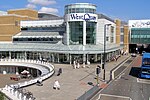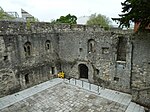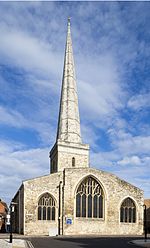Carnival House
Buildings and structures in SouthamptonCarnival Corporation & plcCommercial buildings completed in 2009Corporate headquartersHOK (firm) buildings ... and 1 more
Headquarters in the United Kingdom

Carnival House is a landmark office building in the city of Southampton, Hampshire, England. It is a purpose-built headquarters for Carnival UK, the United Kingdom operating company of Carnival Corporation & plc, the world's largest cruise shipping company. The building was officially opened on Sunday 19 July 2009. Carnival House contains the head offices of P&O Cruises and Cunard Line. It also houses the UK offices of Princess Cruises, (headquartered in Santa Clarita, California) and Seabourn / Holland America Line (headquartered in Seattle, Washington). In addition Carnival Corporation's new build division is based in the building.
Excerpt from the Wikipedia article Carnival House (License: CC BY-SA 3.0, Authors, Images).Carnival House
Harbour Parade, Southampton The Polygon
Geographical coordinates (GPS) Address External links Nearby Places Show on map
Geographical coordinates (GPS)
| Latitude | Longitude |
|---|---|
| N 50.90153 ° | E -1.40946 ° |
Address
Carnival House
Harbour Parade
SO15 1ST Southampton, The Polygon
England, United Kingdom
Open on Google Maps










